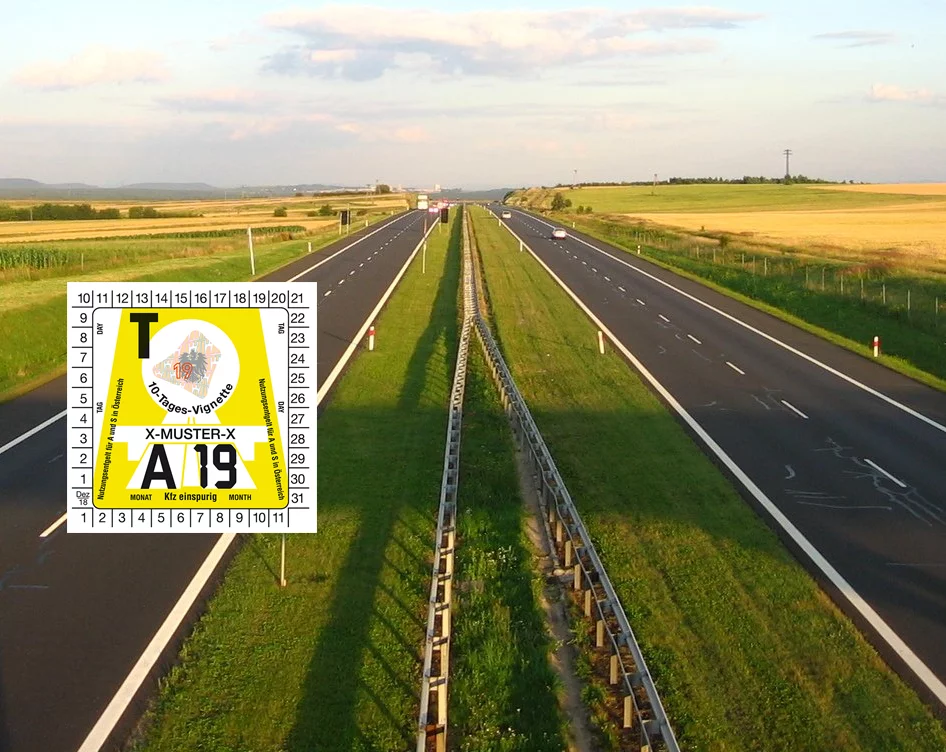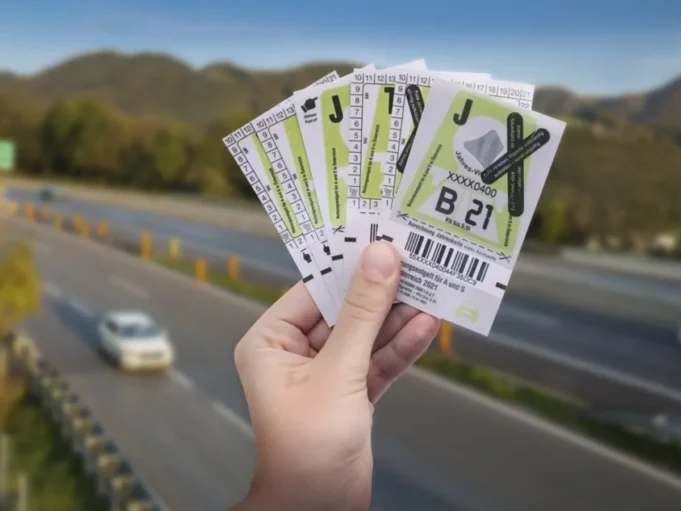Austria, known for its picturesque landscapes and well-maintained roads, is a popular destination for tourists and business travelers. If you’re planning to drive in Austria in 2024, understanding the vignette system is crucial. This blog post provides a comprehensive guide to vignette rules and offers practical tips for foreigners navigating Austrian roads.
Understanding the Vignette System
A vignette is a toll sticker required for driving on Austrian motorways and expressways. In 2024, the vignette system remains the primary method for collecting road tolls. This system is straightforward: you buy a vignette, stick it on your vehicle’s windshield, and it allows you to use the highways during the validity period.
Purchasing a vignette is mandatory for all vehicles up to 3.5 tons, including cars, motorcycles, and motorhomes. Vignettes are available for different durations, such as 10 days, 2 months, or a year. The color of the vignette changes annually, so ensure you have the current one.
Where to Buy and Costs
You can buy vignettes at most gas stations near the border, at Austrian post offices, and online. As of 2024, the prices vary based on the type of vehicle and the duration of the vignette. For example, a 10-day vignette for a car typically costs less than a 2-month or annual vignette. Motorcycles are usually cheaper than cars.
It’s crucial to mention the guidance available on this digital vignette website, particularly for those opting for a digital vignette. For cars, the physical vignette should be placed on the inside of the windshield, while for motorcycles, it must be affixed to a non-removable part. For those who choose the convenience of a digital vignette, you can manage and verify the placement and validity through the website. This site is a valuable resource for ensuring compliance with the regulations. An incorrectly placed physical vignette, or a misregistered digital vignette, can lead to hefty fines, so using this website for guidance and verification can help avoid such issues.
Penalties for Non-Compliance
Not having a valid one while driving on Austrian highways can result in significant fines. The authorities frequently check for them, especially at border crossings and on major highways. If you’re caught without a valid vignette, you’ll be required to pay an on-the-spot fine, which can be quite steep.
If you refuse to pay the fine, the authorities can take legal action, leading to even higher costs. To avoid these issues, always ensure you have a valid one before entering the motorway.
Tips for Foreign Drivers in Austria

Driving Laws and Regulations
Driving laws might differ from those in your home country. In Austria, you drive on the right-hand side of the road. Seat belts are mandatory for all passengers, and children under 14 must have appropriate child seats.
Speed limits in Austria are strictly enforced. They are typically 130 km/h on motorways, 100 km/h on open roads, and 50 km/h in urban areas. Pay close attention to local speed limit signs, as they may vary. Austrian police are known for their stringent enforcement of traffic rules, so adhering to these limits is crucial.
Navigating Austrian Roads
Roads are generally in excellent condition, but it’s important to be aware of local road signs and signals. Road signs follow international standards, with slight variations. For example, a blue sign with a white number indicates the speed limit, while a circular sign with a red border and black diagonal line means ‘end of speed limit.’
GPS systems help navigate but ensure yours is up-to-date with local maps. Also, be aware of the local weather conditions, especially in winter. Some regions in Austria require winter tires or snow chains, so prepare accordingly.
Emergency Situations
In Austria, like in many European countries, the number to call in emergencies is 112. This number connects you to emergency services for immediate assistance and is accessible free of charge from any phone. Whether you face a medical emergency, a fire, or require police assistance, 112 is the universal number to remember. It’s crucial for drivers, especially foreigners, to keep this number in mind while navigating Austrian roads.
If you encounter an emergency while driving, such as a vehicle breakdown or an accident, it’s important to act quickly and safely. Move your vehicle to a safe location if possible, and set up a warning triangle to alert other drivers. Always keep your travel documents, like your driver’s license and vehicle registration, easily accessible. In the case of rental cars, keep the rental agency’s contact and any roadside assistance numbers handy for prompt support.
Vignette Tips and Tricks

Buying Vignettes Online
Buying online can be a convenient option, especially if you’re planning your trip. Online purchases often allow you to select the start date of the validity, which is helpful for precise trip planning.
When buying online, ensure you purchase from an official website to avoid scams. After the purchase, you’ll receive a digital one linked to your vehicle’s license plate number, eliminating the need for a physical sticker.
Understanding Special Cases
There are exceptions and special cases in the system. For instance, certain vehicles, like those with electric or hybrid engines, may qualify for reduced rates or exemptions. Also, some stretches of road, like certain alpine passes, might require an additional toll.
Stay informed about these exceptions by checking the latest information on the Austrian toll system website or inquiring at local tourist information centers.
Extending Your Stay
If you’re extending your stay in Austria, remember to renew it accordingly. Driving with an expired vignette, even by a day, can lead to fines. For longer stays, consider purchasing a 2-month or annual vignette for better value.
Keep an eye on the expiration date and renew it in time, either online or at any sales point. Keeping a digital reminder or setting an alarm a few days before the expiration can be a helpful practice.

Conclusion
Driving in Austria requires them for highway use, and understanding this system is essential for a smooth travel experience. Remember to adhere to local driving laws, stay informed about road conditions, and always have a valid one on your vehicle. With these tips and insights, your driving journey in Austria in 2024 should be enjoyable and hassle-free.















